- The importance of proper watering
- Watering requirements for cucumber plants
- Signs of under or overwatering cucumber plants
- Best practices for watering cucumber plants
- Additional tips to prevent cucumber plants from drying out
- Understanding the greenhouse environment
- Temperature
- Humidity
- Light
- Ventilation
- Watering
- Preventing Drying Out
- Managing humidity levels
- Choosing the right soil and fertilizer
- 1. Soil type
- 2. pH level
- 3. Organic matter
- 4. Fertilizer
- 5. Fertilizer application
- Providing adequate ventilation
- Controlling pests and diseases
- Pests:
- Diseases:
- Pruning and trellising techniques
- 1. Remove lateral shoots
- 2. Train the main stem
- 3. Prune excessive foliage
- 4. Provide proper spacing
- 5. Use trellis or stakes
- 6. Monitor and adjust regularly
- Harvesting and storing cucumbers
- 1. Timing of harvest:
- 2. How to harvest:
- 3. Storing freshly harvested cucumbers:
- 4. Preserving cucumbers:
- 5. Using harvested cucumbers:
- “Question-Answer”
- Why do cucumbers dry out in the greenhouse?
- What are some signs that cucumbers are drying out in the greenhouse?
- How can I prevent cucumbers from drying out in my vegetable garden?
- Can I use a misting system in the greenhouse to prevent cucumbers from drying out?
- Are there any specific cucumber varieties that are more resistant to drying out in the greenhouse?
- “Video” Your Cucumbers Will LOVE You For This: 5 Things To Do NOW!
Growing cucumbers in a greenhouse can be a rewarding experience, but it can also come with its challenges. One common problem that many gardeners face is the drying out of cucumbers in the greenhouse. Cucumbers are known for their high water content, so it can be puzzling to see them becoming dry and shriveled. In this article, we will explore the reasons behind this phenomenon and discuss some preventive measures that you can take to ensure the health and hydration of your cucumber plants.
One of the main reasons why cucumbers dry out in the greenhouse is a lack of humidity. Greenhouse environments often have lower humidity levels compared to the outside. This can result in the rapid evaporation of moisture from the cucumber leaves and stems, leading to dehydration. Additionally, the warm temperatures in the greenhouse can further contribute to the drying out of the plants.
To prevent cucumber dehydration in the greenhouse, it is important to maintain a proper humidity level. One effective way to increase humidity is by regularly misting the cucumber plants with water. This will provide a fine mist that will settle on the leaves and create a humid environment around the plants. Another method is to place trays of water near the cucumber plants to increase the overall humidity in the greenhouse.
In addition to maintaining humidity, it is essential to provide adequate water to the cucumber plants. Regular and thorough watering is crucial to keep the plants hydrated. Be sure to water the plants at the base and avoid wetting the leaves, as this can lead to fungal diseases. Installing a drip irrigation system can help ensure a consistent water supply to the plants without wetting the foliage.
Furthermore, it is important to monitor the temperature in the greenhouse. Excessively high temperatures can accelerate the evaporation of moisture from the cucumber plants. Consider using shading material or installing a ventilation system to regulate the temperature and prevent overheating. This will help maintain a more favorable environment for your cucumber plants.
The importance of proper watering
Proper watering is essential for the healthy growth of cucumber plants in a greenhouse. Water is a vital nutrient for plants, and it plays a crucial role in various physiological processes, including photosynthesis, nutrient uptake, and transpiration.
Watering requirements for cucumber plants
Cucumber plants have specific water requirements, and it is important to meet these needs to prevent them from drying out in the greenhouse. Cucumbers require consistently moist soil, but not soggy conditions. Overwatering can lead to root rot and other fungal diseases, while underwatering can cause stress and negatively affect the growth of the plants.
Signs of under or overwatering cucumber plants
It is important to closely monitor the moisture levels of the soil to ensure that the plants are getting the right amount of water. Signs of underwatering include wilted leaves, yellowing or browning of leaves, and stunted growth. On the other hand, overwatering can result in yellowing leaves, wilting, and a strong, unpleasant odor coming from the soil.
Best practices for watering cucumber plants
To keep cucumber plants properly hydrated, it is important to follow these best practices:
- Water the plants deeply, ensuring that the water penetrates the root zone.
- Water the plants early in the morning to minimize evaporation and allow the leaves to dry before evening.
- Use a drip irrigation system or a soaker hose to water the plants at the base, avoiding wetting the foliage.
- Regularly check the moisture level of the soil by sticking your finger a few inches into the soil. If it feels dry, it is time to water.
- Avoid overwatering by allowing the soil to dry out slightly between waterings.
Additional tips to prevent cucumber plants from drying out
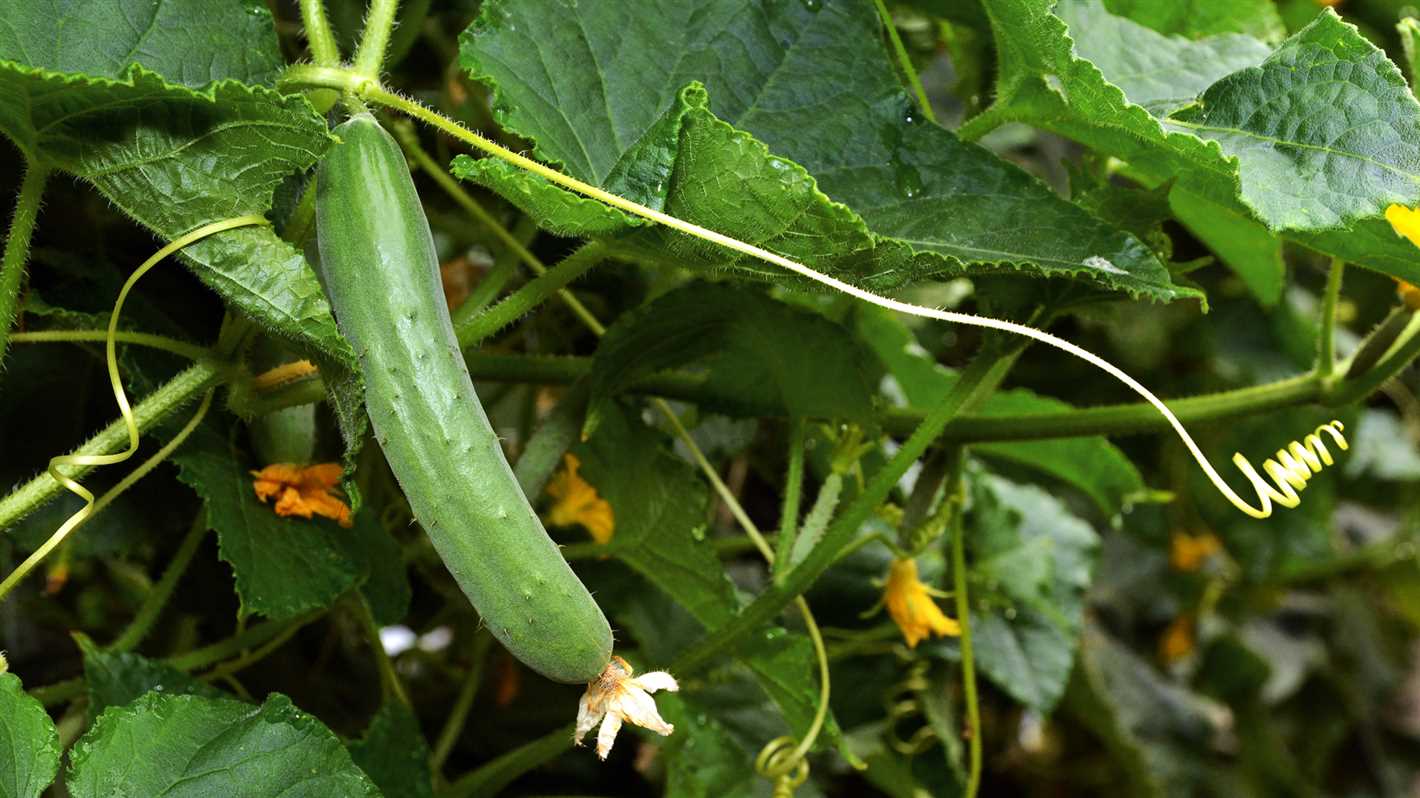
In addition to proper watering, there are a few other things you can do to prevent cucumber plants from drying out:
- Provide adequate shade or use shade cloths during the hottest hours of the day to reduce water loss through transpiration.
- Mulch the soil around the cucumber plants to help retain moisture and prevent weed growth.
- Regularly inspect the plants for signs of pests or diseases, as these can contribute to stress and affect water uptake.
- Properly space the cucumber plants to allow for good air circulation, which can help prevent moisture buildup and reduce the risk of fungal diseases.
By following these watering practices and taking additional measures to prevent water loss, you can ensure that your cucumber plants stay healthy and hydrated in the greenhouse.
Understanding the greenhouse environment
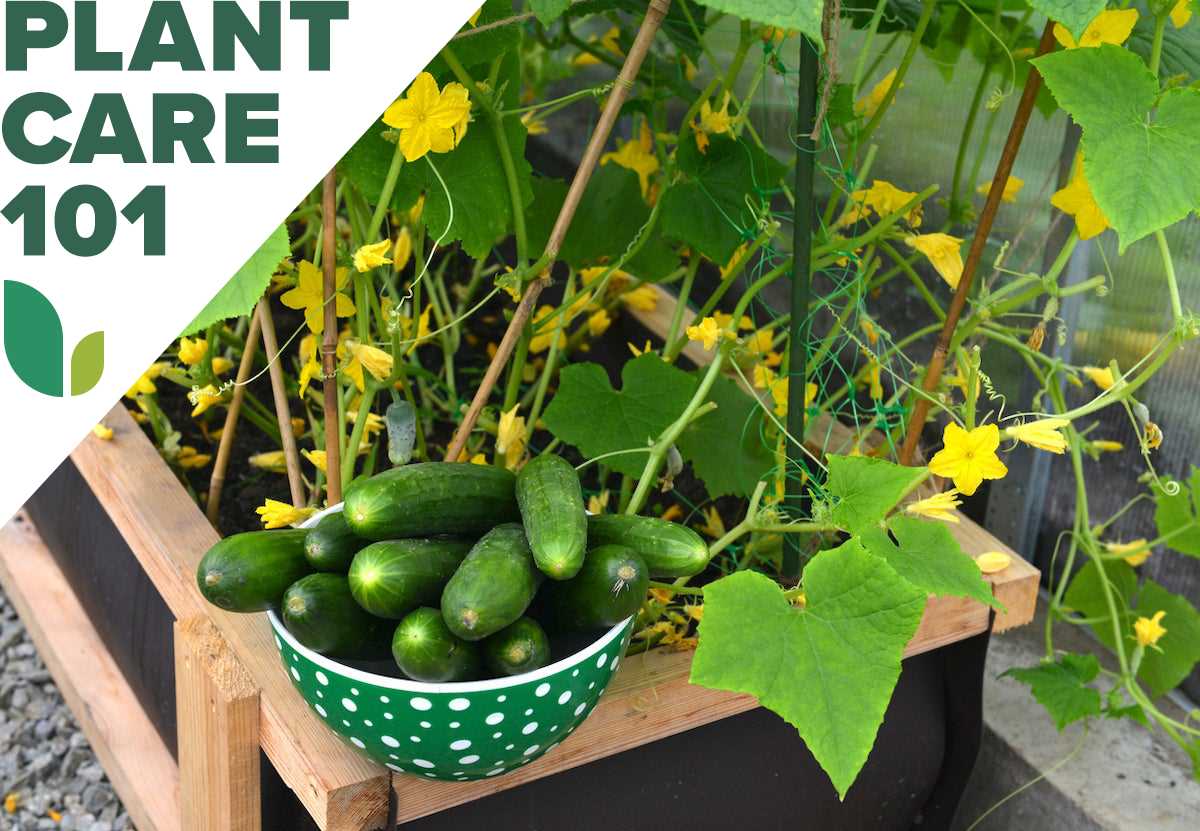
A greenhouse is an enclosed structure designed to provide an optimal environment for plant growth. Understanding the conditions inside the greenhouse is essential for successfully growing cucumbers and preventing them from drying out.
Temperature
The temperature inside the greenhouse plays a crucial role in cucumber growth. Ideally, cucumbers prefer a temperature range of 70 to 75 degrees Fahrenheit (21 to 24 degrees Celsius) during the day and around 60 degrees Fahrenheit (15 degrees Celsius) at night. Maintaining a stable temperature within this range promotes optimal growth and prevents the plants from experiencing stress.
Humidity
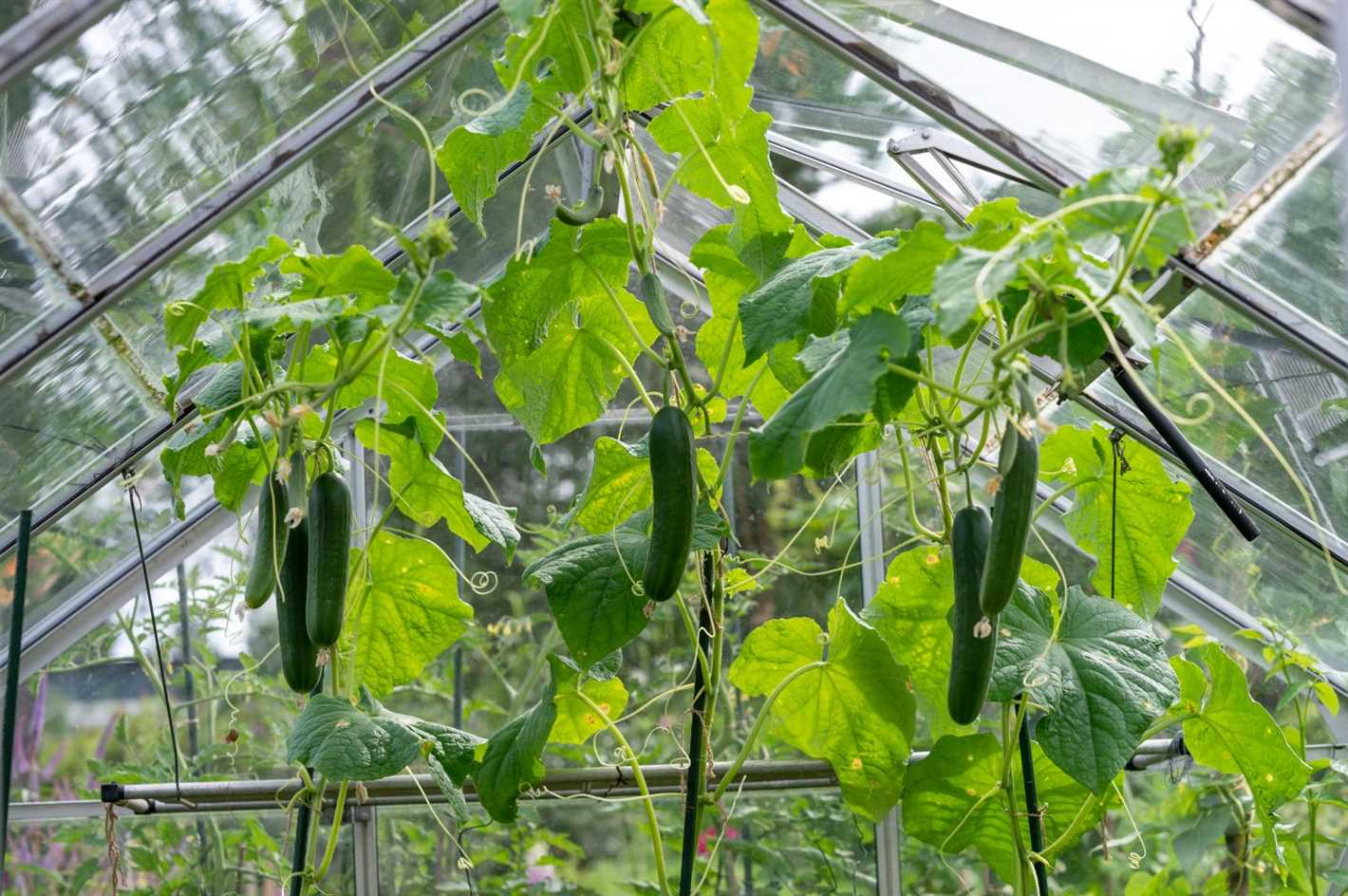
Humidity levels inside the greenhouse are also important for cucumber plants. Cucumbers thrive in a moderately humid environment with humidity levels around 70-75%. Higher humidity levels can lead to the development of fungal diseases, while low humidity can cause the leaves and fruits to dry out. Regular misting or using a humidifier can help maintain the optimal humidity levels.
Light
Light is essential for photosynthesis, the process by which plants convert sunlight into energy. Cucumbers require at least 8 hours of direct sunlight each day to thrive. If the greenhouse doesn’t receive enough natural light, supplemental artificial lighting can be used to provide the required amount of light.
Ventilation
Proper ventilation is crucial to maintain a healthy greenhouse environment. Good airflow helps regulate temperature, humidity, and prevents the spread of diseases. Greenhouses should have vents or fans to allow fresh air to circulate. Air circulation also helps prevent excessive humidity that can lead to the development of fungal diseases.
Watering
Regular and adequate watering is essential for cucumber plants. Greenhouse-grown cucumbers require consistent moisture levels in the soil to prevent drying out. It is important to monitor the soil moisture levels and water the plants consistently, ensuring the soil remains evenly moist but not waterlogged.
Preventing Drying Out
In order to prevent cucumbers from drying out in the greenhouse, it is important to closely monitor the environmental conditions. Regularly check the temperature, humidity, and moisture levels in the soil. Adjust these as needed to create the most favorable growing conditions for your cucumbers. Consider using automated systems or timers to maintain optimal conditions consistently.
Additionally, providing adequate shading during hotter periods can help prevent excessive heat stress on the plants. Using shade cloths or installing shade nets can help reduce the intensity of direct sunlight.
By understanding and managing the greenhouse environment effectively, you can ensure healthy cucumber plants and a successful harvest. With proper care and attention, your greenhouse cucumbers will thrive and produce an abundance of tasty fruits.
Managing humidity levels
Humidity levels play a crucial role in preventing cucumbers from drying out in the greenhouse. Here are some strategies to effectively manage humidity:
- Ventilation: Adequate ventilation is essential to control humidity levels in the greenhouse. Proper airflow helps to reduce excess moisture and prevent the cucumbers from drying out. Install fans or vents to ensure consistent air circulation.
- Watering: Be mindful of the watering practices in your vegetable garden. Overwatering can lead to high humidity levels. Water the cucumbers evenly and avoid excessive moisture that can accumulate in the greenhouse, causing the cucumbers to dry out.
- Monitoring: Regularly monitor the humidity levels in the greenhouse using a hygrometer. Aim for a range between 50% to 70% humidity. Adjust your ventilation and watering practices accordingly to maintain optimal levels.
- Shading: Installing shade cloth or using shade paint on greenhouse windows can help to reduce direct sunlight and subsequently lower humidity levels. Excessive heat can evaporate the moisture from the cucumbers, resulting in them drying out.
- Drip irrigation: Consider using drip irrigation systems to water your cucumbers. Drip irrigation allows for precise control over water delivery, reducing the likelihood of excess moisture accumulating in the greenhouse.
- Dehumidifier: In some cases, using a dehumidifier can be beneficial to control humidity levels. This device helps to remove excess moisture from the air, keeping the greenhouse environment dry and preventing cucumbers from drying out.
By implementing these strategies, you can effectively manage humidity levels in your greenhouse and prevent cucumbers from drying out, ensuring healthy and thriving plants.
Choosing the right soil and fertilizer
When it comes to cultivating healthy and productive cucumber plants in your greenhouse or vegetable garden, the right soil and fertilizer are crucial. Here are some tips to help you choose the right soil and fertilizer for your cucumbers:
1. Soil type
Cucumbers prefer well-draining soil that is rich in organic matter. Sandy loam or loam soil is ideal for cucumber cultivation as it allows for proper water drainage while retaining enough moisture for the plants. Avoid heavy clay soils as they tend to hold onto water and can cause root rot.
2. pH level
The pH level of the soil is important for the overall health and growth of cucumber plants. The ideal pH range for cucumbers is between 6 and 7.5. You can easily test the pH level of your soil using a pH testing kit available at most garden centers. If the soil is too acidic, you can add lime to raise the pH, and if it’s too alkaline, you can add sulfur or peat moss to lower the pH.
3. Organic matter
Adding organic matter to the soil, such as compost or well-rotted manure, can greatly improve its fertility and moisture retention capabilities. Organic matter also provides essential nutrients to the plants and promotes a healthy soil ecosystem. Incorporate organic matter into the soil before planting or use it as a top dressing throughout the growing season.
4. Fertilizer
Cucumbers are heavy feeders and require regular fertilization. Choosing the right fertilizer that provides a balance of essential nutrients is important. Look for a fertilizer with a higher nitrogen content to promote vigorous leaf and stem growth. Additionally, phosphorus and potassium are essential for healthy root development and fruit production. You can use a balanced fertilizer with an NPK ratio of 10-10-10 or opt for organic options like compost tea or fish emulsion.
5. Fertilizer application
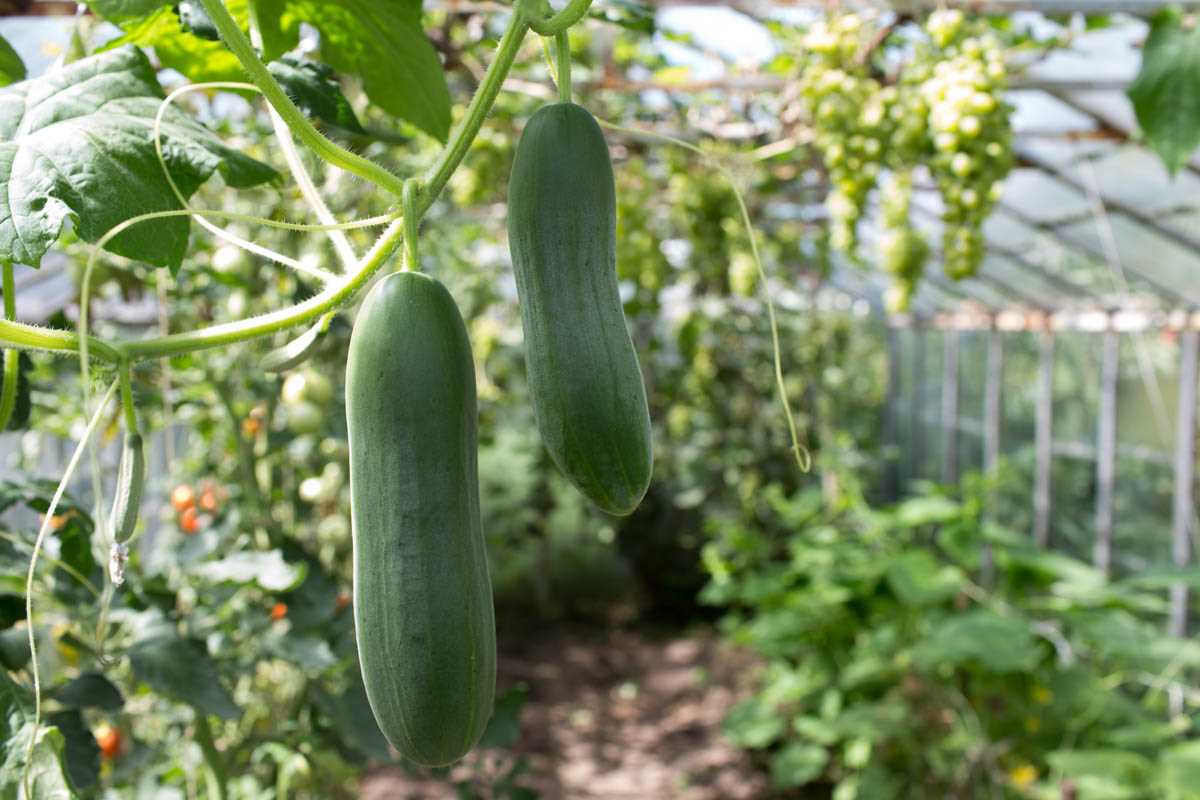
To prevent cucumber plants from drying out in the greenhouse, it’s important to apply fertilizer correctly. Start by incorporating a slow-release fertilizer into the soil at the time of planting. This will provide a steady supply of nutrients over an extended period. As the plants grow, you can supplement with liquid fertilizers or foliar sprays to ensure continuous nutrient uptake. Follow the manufacturer’s instructions for application rates and frequency.
By choosing the right soil type and fertilizer for your cucumber plants, you can create optimal growing conditions and increase their resistance to drying out in the greenhouse. Remember to regularly monitor the moisture levels and provide proper irrigation to keep the soil moist but not waterlogged. With proper care, you’ll enjoy a bountiful harvest of delicious cucumbers.
Providing adequate ventilation
One of the main reasons why cucumbers dry out in the greenhouse is a lack of proper ventilation. Without adequate air circulation, the humidity levels can rise, leading to moisture buildup on the leaves and fruits. This moisture can create a favorable environment for fungal diseases to develop, which can cause the cucumbers to dry out.
To prevent this, it is essential to provide sufficient ventilation in your greenhouse. Here are a few ways to achieve this:
- Install vents: Consider adding vents or windows to your greenhouse. These can be placed on opposite sides to allow for cross-ventilation. Opening these vents during the day, especially when it’s hot, can help remove excess heat and moisture from the greenhouse.
- Use fans: Installing fans in your greenhouse can help improve air circulation. They can be used in conjunction with vents to ensure proper airflow. Fans can also help control the temperature inside the greenhouse, preventing it from getting too hot.
- Door ventilation: Make sure to keep the greenhouse door open whenever possible to allow for fresh air to enter. This will help prevent stagnant air and allow for better ventilation.
- Shade cloth: Using shade cloth on the greenhouse roof can help reduce the temperature inside and prevent the cucumbers from drying out. It will alsohelp diffuse the light, preventing sunburn on the leaves and fruits.
By providing adequate ventilation, you can create a healthier environment for your cucumbers and reduce the risk of them drying out in the greenhouse.
Controlling pests and diseases
One of the biggest challenges in vegetable gardening, including cucumber cultivation in a greenhouse, is dealing with pests and diseases. These threats can quickly ruin your cucumber plants and decrease their yield if not properly managed. Here are some common pests and diseases that affect cucumbers and how to control them:
Pests:
- Aphids: These small insects feed on the sap of cucumber plants, causing yellowing, distorted leaves, and stunted growth. To control aphids, encourage natural predators like ladybugs, use insecticidal soap or neem oil, or spray a strong stream of water to dislodge them from the plants.
- Cucumber beetles: These beetles feed on leaves, stems, and flowers of cucumber plants, leading to wilting and transmission of bacterial wilt disease. Remove them by handpicking, use floating row covers, or apply insecticides labeled for cucumber beetle control.
- Spider mites: These tiny pests suck the sap from cucumber leaves, causing yellowing, bronzing, and webbing. Increase humidity, use predatory mites, or spray the undersides of leaves with insecticidal soap to control spider mites.
Diseases:
- Powdery mildew: This fungal disease appears as white powdery spots on the leaves, affecting photosynthesis and reducing yield. Improve air circulation, avoid overhead watering, and use fungicides labeled for powdery mildew control.
- Downy mildew: This disease causes yellowing of leaves, white fluffy growth on the undersides, and defoliation. Plant resistant varieties, provide good airflow, and use fungicides labeled for downy mildew control.
- Root rot: Overwatering and poorly drained soil can lead to root rot, causing wilting, yellowing, and stunted growth. Improve drainage, avoid overwatering, and provide proper soil sanitation.
Regular monitoring, early detection, and prompt action are essential in controlling pests and diseases in your cucumber plants. Remember to always follow the instructions on the labels of any pest control products and consult with local agricultural authorities for specific recommendations in your area. By implementing these strategies, you can protect your cucumber plants and ensure a successful harvest.
Pruning and trellising techniques
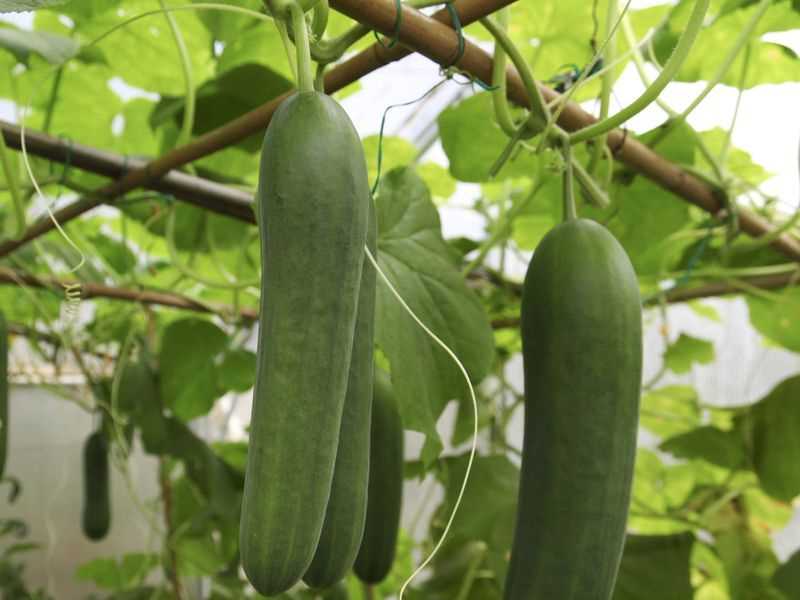
Pruning and trellising cucumber plants in a greenhouse can help prevent drying out and improve overall plant health. Here are some techniques you can use:
1. Remove lateral shoots
Cucumber plants often produce lateral shoots or side branches that can overcrowd the plant and restrict air circulation. To prevent this, regularly remove these lateral shoots by pinching them off or cutting them at the base. This will allow the main stem to grow vertically and promote better airflow.
2. Train the main stem
By training the main stem of the cucumber plant to grow vertically, you can optimize space and sunlight exposure. Use a trellis or stake to support the main stem and gently tie it as it grows. This will help prevent the plant from sprawling on the ground, reducing the chances of contact with moist soil and potential diseases.
3. Prune excessive foliage
Too much foliage on a cucumber plant can hinder air circulation and create a humid environment, leading to increased risk of diseases and drying out. Remove any excessive foliage, especially those that are blocking sunlight from reaching the lower parts of the plant. Focus on removing leaves that are yellowing, diseased, or damaged.
4. Provide proper spacing
When planting cucumber plants, ensure that they are spaced adequately to allow for good airflow between the plants. Crowded plants can create a microclimate that traps moisture and promotes disease development. Check the spacing recommendations for the specific cucumber variety you are growing and adjust accordingly.
5. Use trellis or stakes
Trellises or stakes provide support for the cucumber plants and help keep the fruits off the ground. This not only prevents the fruits from rotting but also reduces the chances of moisture wicking up to the plant and causing drying out. Make sure to choose sturdy and tall trellises or stakes that can accommodate the growth of the plants.
6. Monitor and adjust regularly
Regularly observe your cucumber plants and make adjustments as needed. Keep an eye out for any signs of overcrowding, excessive foliage growth, or drying out. By monitoring and adjusting regularly, you can address any issues promptly and help maintain a healthy and productive cucumber crop.
By implementing these pruning and trellising techniques in your greenhouse vegetable garden, you can improve air circulation, reduce the risk of diseases, and prevent cucumbers from drying out.
Harvesting and storing cucumbers
1. Timing of harvest:
It is important to harvest cucumbers at the right time to ensure they are flavorful and have a crisp texture. Cucumbers should be harvested when they reach the desired size and color. This typically occurs when they are about 6-8 inches long and have a bright green color. Avoid picking overripe cucumbers as they may be yellow and have a bitter taste.
2. How to harvest:
When harvesting cucumbers, it is best to use a pair of clean and sharp garden shears or a knife. Carefully cut the cucumber off the vine, leaving a small stem attached. Avoid pulling or twisting the cucumber, as this can damage the plant. Handle the cucumbers with care to prevent bruising.
3. Storing freshly harvested cucumbers:
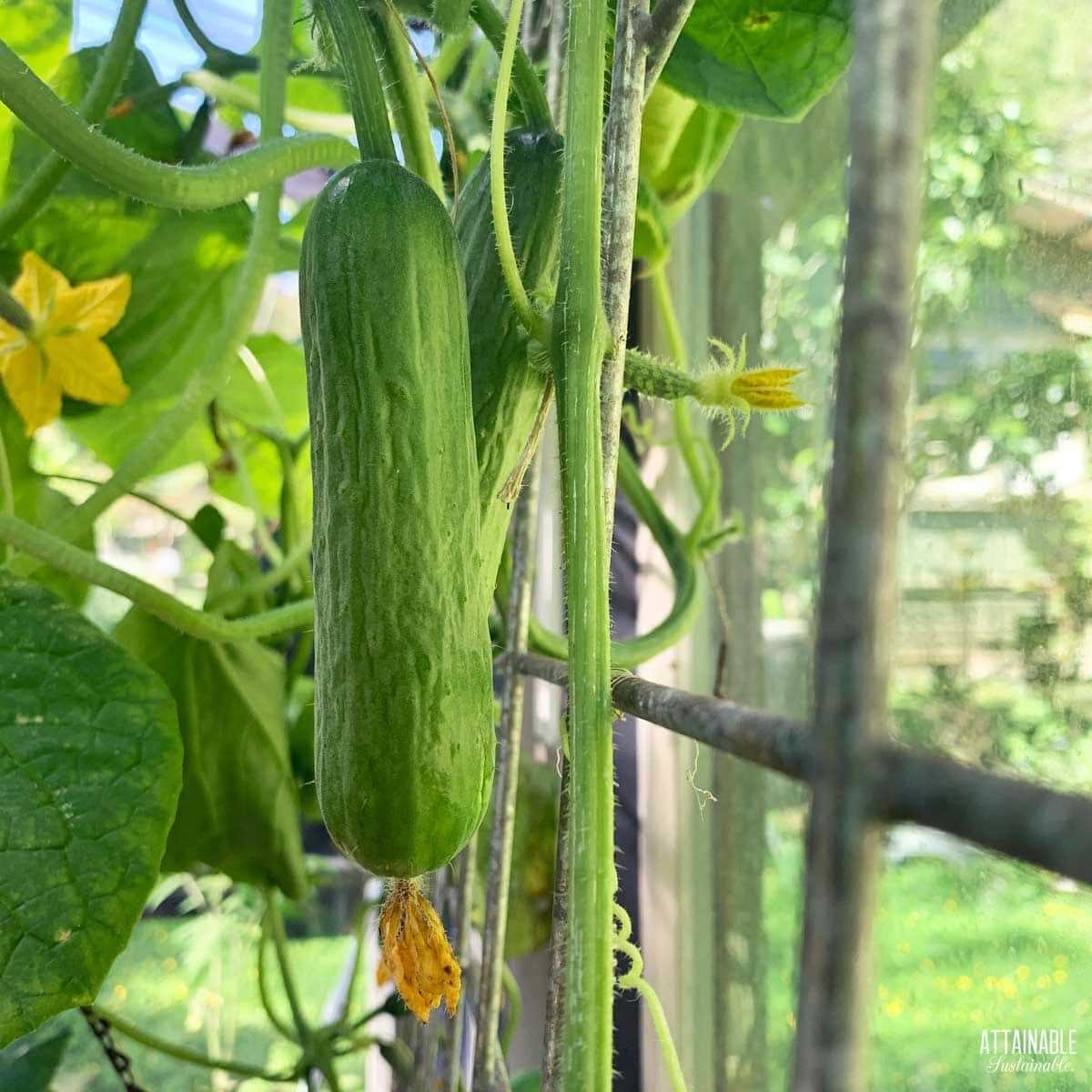
- Before storing, gently wash the cucumbers under cold water to remove any dirt or debris. Pat them dry with a clean towel.
- If you plan to use the cucumbers within a day or two, you can store them at room temperature. Place them in a cool, dry area away from direct sunlight.
- If you need to store cucumbers for a longer period, it is best to refrigerate them. Wrap each cucumber individually in a paper towel and place them in a plastic bag. Make sure the bag is sealed tightly to retain moisture.
- Stored properly, cucumbers can last for up to a week in the refrigerator.
4. Preserving cucumbers:
If you have an abundance of cucumbers and want to preserve them for later use, there are several methods you can use:
- Pickling: Cucumbers can be pickled by soaking them in a brine solution made of vinegar, water, salt, and spices. This process extends their shelf life and adds a tangy flavor.
- Freezing: Cucumbers can be sliced or shredded and frozen for later use in salads or smoothies. Blanch them in boiling water for a few minutes, then quickly plunge them into ice water before freezing.
- Canning: Cucumbers can also be canned in jars to preserve them. This involves packing sliced cucumbers in jars and covering them with a vinegar-based brine before processing them in a water bath.
5. Using harvested cucumbers:
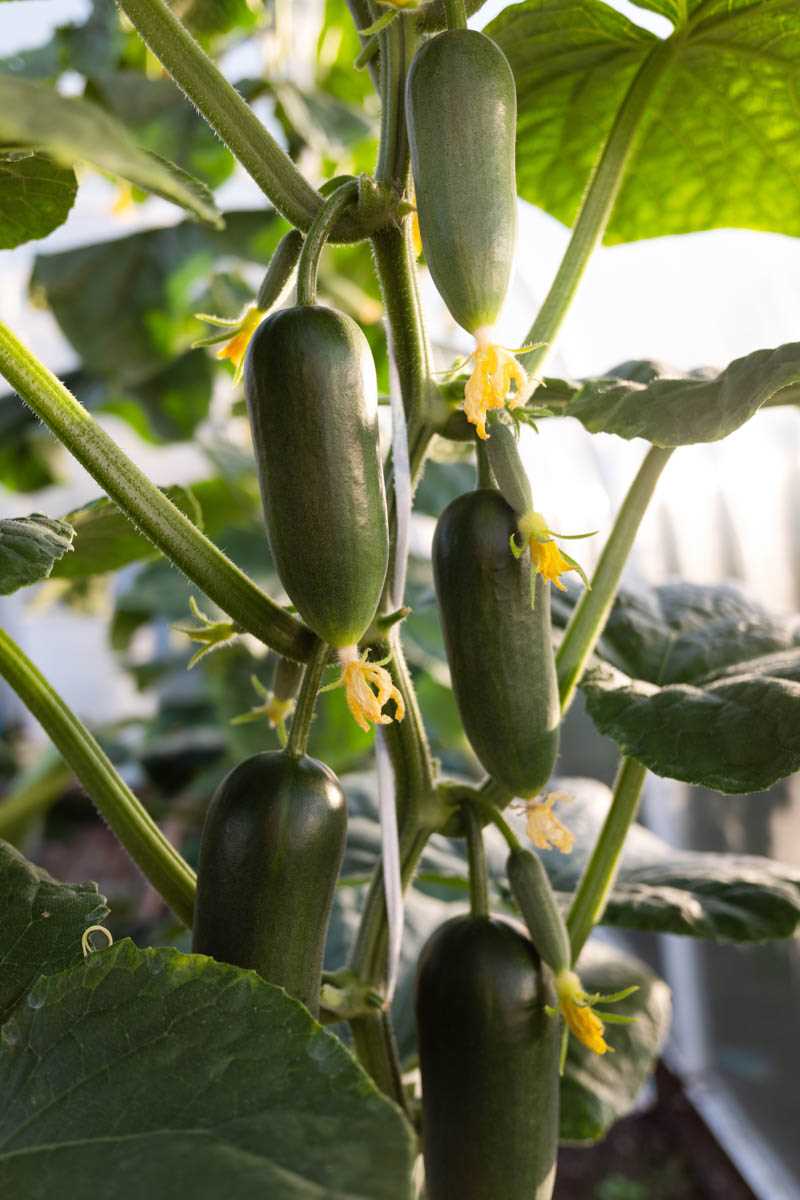
Freshly harvested cucumbers can be used in a variety of dishes, including salads, sandwiches, pickles, and smoothies. Their crisp texture and refreshing taste make them a popular ingredient in many summer recipes. Experiment with different recipes to make the most out of your cucumber harvest!
“Question-Answer”
Why do cucumbers dry out in the greenhouse?
Cucumbers can dry out in the greenhouse due to inadequate humidity levels. Greenhouses can have low humidity levels because of high temperatures and poor ventilation, causing the cucumbers to lose moisture quickly and dry out.
What are some signs that cucumbers are drying out in the greenhouse?
Some signs that cucumbers are drying out in the greenhouse include wilted leaves, shriveled cucumbers, and a pale color. These signs indicate that the cucumbers are not getting enough moisture and are drying out.
How can I prevent cucumbers from drying out in my vegetable garden?
To prevent cucumbers from drying out in your vegetable garden, you can provide adequate water and maintain proper humidity levels. Water the plants regularly, making sure the soil is consistently moist but not waterlogged. You can also use mulch around the cucumber plants to help retain moisture in the soil. Additionally, you can mist the plants with water to increase humidity levels in dry weather.
Can I use a misting system in the greenhouse to prevent cucumbers from drying out?
Yes, using a misting system in the greenhouse can help prevent cucumbers from drying out. Misting the plants with water creates a humid environment, which can help keep the cucumbers hydrated and prevent them from drying out. It is important to monitor the humidity levels and adjust the misting system accordingly to prevent overwatering the plants.
Are there any specific cucumber varieties that are more resistant to drying out in the greenhouse?
Yes, there are cucumber varieties that are more resistant to drying out in the greenhouse. Some varieties, such as “Burpless” or “Sumter,” have thicker skins and higher water content, which makes them less prone to drying out. It is recommended to choose these varieties if you are growing cucumbers in a greenhouse with low humidity levels.







